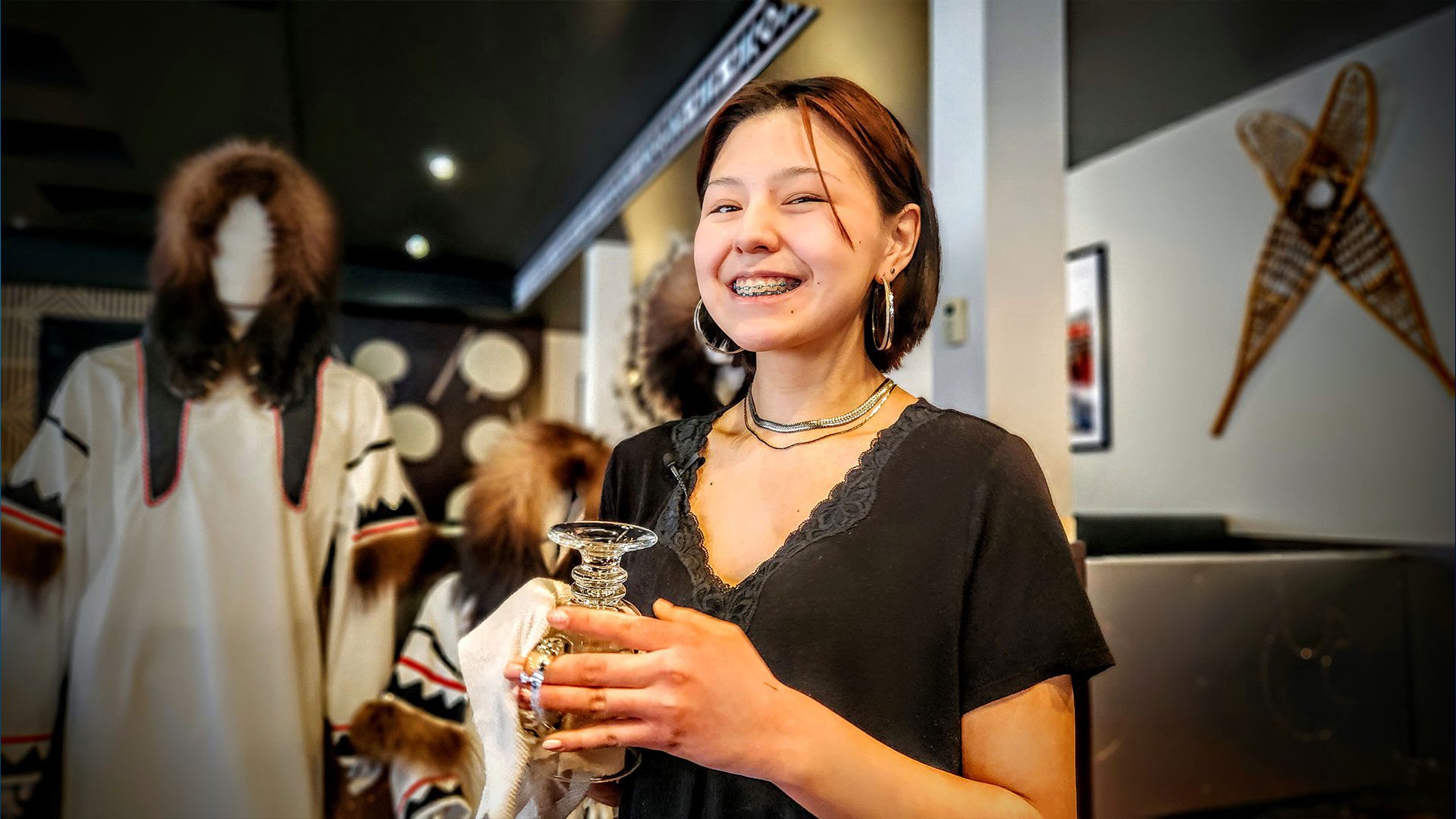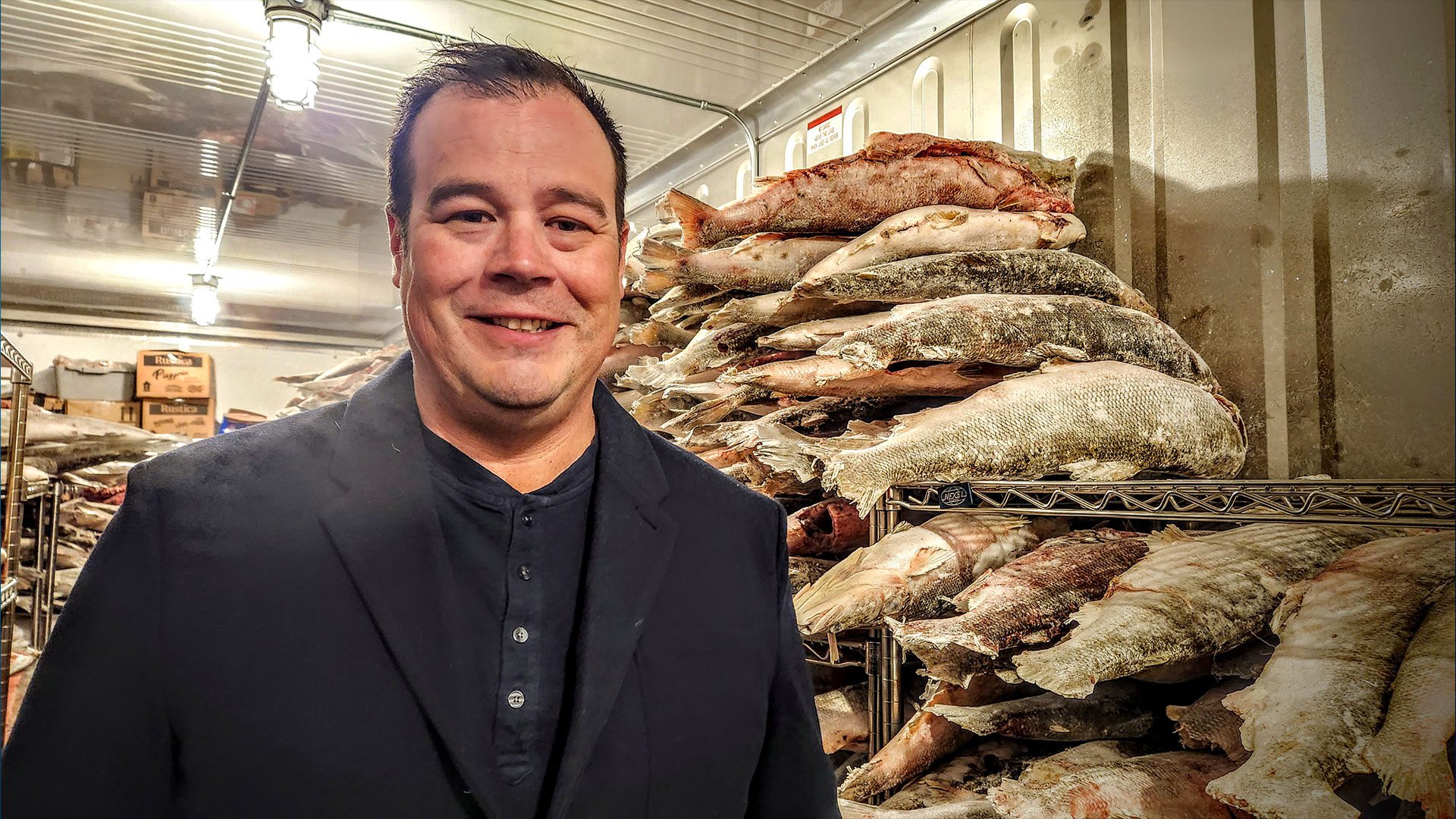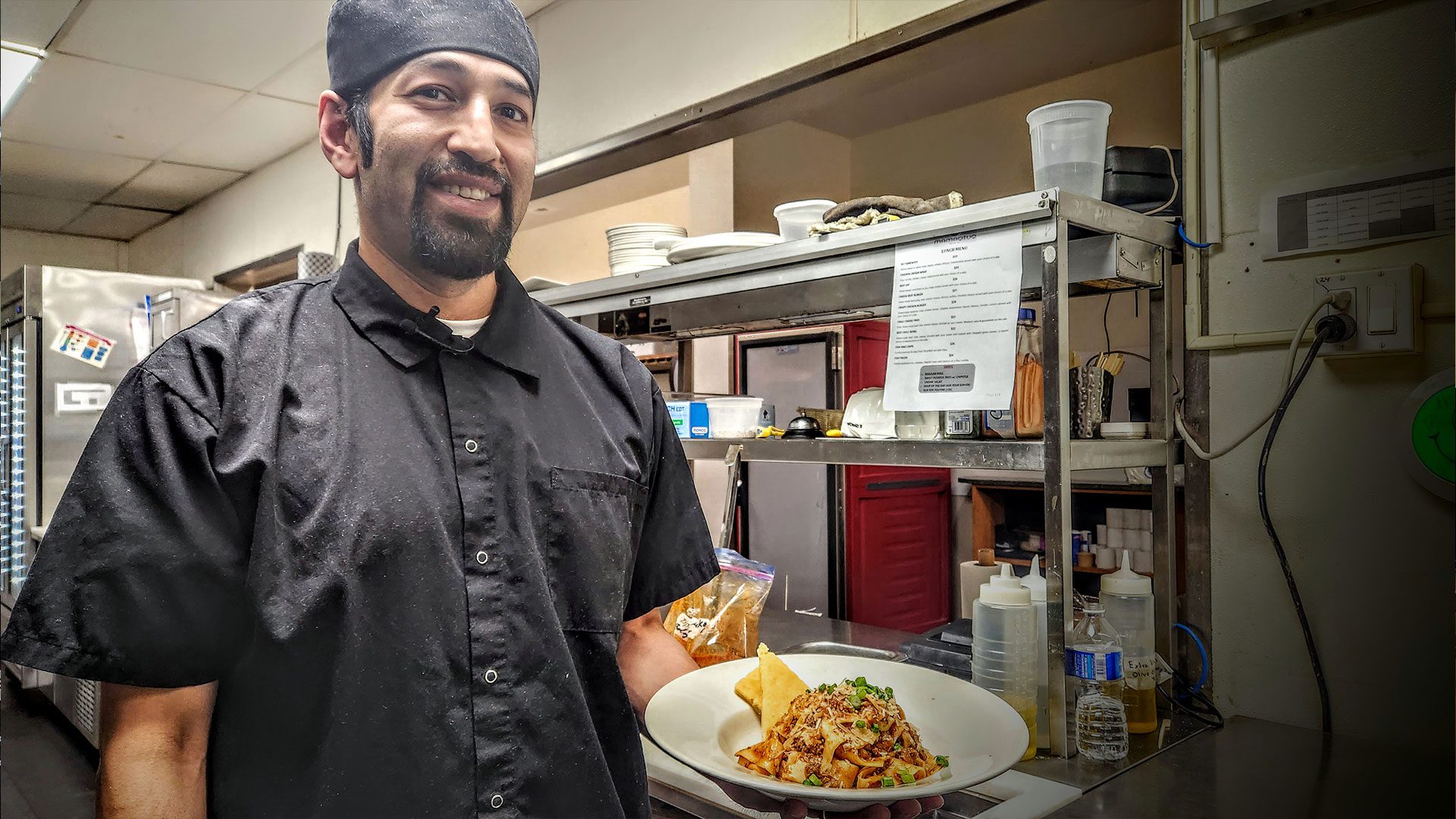
Inuvik Mackenzie Hotel Mamaqtuq Restaurant reopening with emerging musician Gabrielle McLeod on Jan 31 2024 which owned is by the Inuvialuit Regional Corporation. Photo: Karli Zschogner/APTN.
From Muskox empanadas to reindeer tacos, Inuvik’s Inuvialuit-owned Mamaqtuq restaurant is breaking down barriers to local country food and harvested wildlife.
“Traditional food on our menu, it’s kind of like revolutionary,” says 17-year-old Gwich’in hostess Brook-Lyn Bodnar. She says the guests love the cultural makeover of the town’s largest restaurant.
The 100-seat restaurant’s décor features drums, locally made fur parkas and photography.
“We have people come in every day … asking how it’s hunted, where it’s hunted, they’re finding out new information, they’re interested in learning about our culture and it’s really nice.”

Serving traditional food was once illegal. It’s now possible after years of negotiations between the federal and territorial governments and the Inuvialuit-run country food processing plant down the road.
“This plant was designed partially to kind of alleviate the need to rely on southern markets and southern stores to feed ourselves and to relieve that food insecurity,” says Brian Wade, director of the Inuvialuit Community Economic Development Organization. “It also provides a traditional economy for people who have mastered the skills throughout their life to be able to harvest and process.”
Up until now they could only trade and sell to fellow Indigenous people or provide samplers of harvested meat such as beluga, muskox, moose, caribou, geese and fish. Now the Inuvialuit are taking the lead in the ability to sell some country food to everyone.
Inuvialuit now has the lead in land and wildlife management, including tracking populations across the six Western Arctic community regions.
“We sat down with all of the community corporations and the hunters and trappers … and we came up with the harvest calendar … we figured out a fair compensation for each animal that they are harvesting,” says Wade.
“Every month we do our local callouts… then we logistically get it back here into the freezer where it waits to get processed.
“Right now, there’s a lot of fish we just came out of a very busy fishing season. We have some Muskox from Sachs Harbor. And then we have a little bit of moose leftover from this fall.”
“One of the beautiful things of this is that it’s not only designed for the harvester that’s out there getting big game, we source a lot of berries and a lot of fish,” says Wade.
“When a family goes out fishing, they get enough for their household and the surplus that they don’t need they’re able to sell it to this processing plant and creates a little bit of revenue for their households.”
In addition to muskox, the plant is helping the restaurant introduce reindeer. Inuvialuit took ownership of a herd in 2021 which was originally brought to the region by the Nordic Sámi Indigenous.
Wade says the herd is currently 50-60 km north of Inuvik.
“Reindeer are domesticated animals. They’ve been domesticated for generations. The difference between a reindeer and caribou is wildlife. It’s heavily regulated.
“It’s something political and also cultural significance with caribou so we don’t touch any caribou in this processing plant.”
Wade says the plant saves some hides and heads to redistribute for artisans.
He says as this this is their first year, they will be working with the restaurant on demand with seasonal harvests.
“The char right now is locally sourced but it’s not from our region, we get out of Cambridge Bay [NU]. The reason for that is that the arctic char in our region, their numbers are not strong, so we don’t want to put any pressure on the communities to kind of export their resources.”

The Department of Environment and Climate Change in the N.W.T. currently allows commercial harvest of muskox and polar bear.
Under the Wildlife Act, commercial tags are required for anyone who would like to harvest meat specifically for profit. To buy or sell wildlife meat as a commercial business, a license is required even if the owner of the business has an Aboriginal or treat right.
In the meantime, Wade says they are working with the federal Department of Fisheries and Oceans Canada to start a fishery.
Wade says he hopes to see more game available and that there will be more geese and moose on the menu – and in more venues such as hospitals or businesses.
For Inuvialuk cook Joel Amos, who is also the new kitchen manager at Mamaqtuq, the first time being able to cook and sell muskox is exciting because it’s his own taste of home. Like beef, he says it’s delicious, or ‘mamaqtuq’ which is translated as such in Inuktitut and Inuvialuktun.
“I grew up in Sachs Harbor for the first 10 years of my life, so I’m very accustomed to eating muskox,” he says. “I’m glad they have it a part of the menu because it’s the only place that actually has muskox on the menu.”
Amos says access to locally harvested food is helping cut costs in homes.
“I’m fortunate enough to have country food in my freezer so I don’t have to go to the grocery store for protein, but it is very expensive for fruit, vegetables, milk.
Everything across the board is so expensive right now,” he says. “It’s pretty hard for some people right now and I can feel it. There are people out there that are suffering.”
He says it’s exciting to see country food being made available for everyone and a greater Indigenous economy.
“Hunting for Inuit is almost like religion. You practice generation after generation after generation,” he says. “I’m glad and I’m proud to be a part of this because that’s what the Inuvialuit that are providing for our people – from harvest to the table.”

Inuvik, with over 3,000 people, is the western Arctic hub. It’s also a tourist destination. Each year, thousands of tourists from around the world fly or travel up the gravel Dempster and Inuvik-Tuktoyaktuk Highways to dip their toes in the Arctic Ocean and experience the Midnight Sun in the summer or northern lights in the winter.
“I’m excited for them to try muskox. I want every one of them to stop into Mamaqtuq to try our Muskox Bolognese and our Muskox Empanada.”
Farah Abdul, a more recent resident attended Mamaqtuq’s re-opening night on Jan. 31 when country food was introduced to the menu. She says it’s what the community needs.
“The variety is great, it includes everyone as gluten-free, vegetarian, and the local food I think is amazing,” she says. “The food industry here was all fast food which really doesn’t give a lot of options for everyone, so actually good quality food I think is really important.”

The restaurant is located inside the the Mackenzie Hotel. After the Inuvialuit Regional Corporation took over ownership, it’s struggled to keep the restaurant open for dine in service since it opened in May because of staffing issues. This was the same with the restaurant’s previous names Shivers and Mackenzie Grill, especially since the pandemic.
“We always want to support local, being in a remote community in the Arctic,” she says. “I think this is amazing that it’s Inuvialuit-owned, and it will help boost our economy.”










